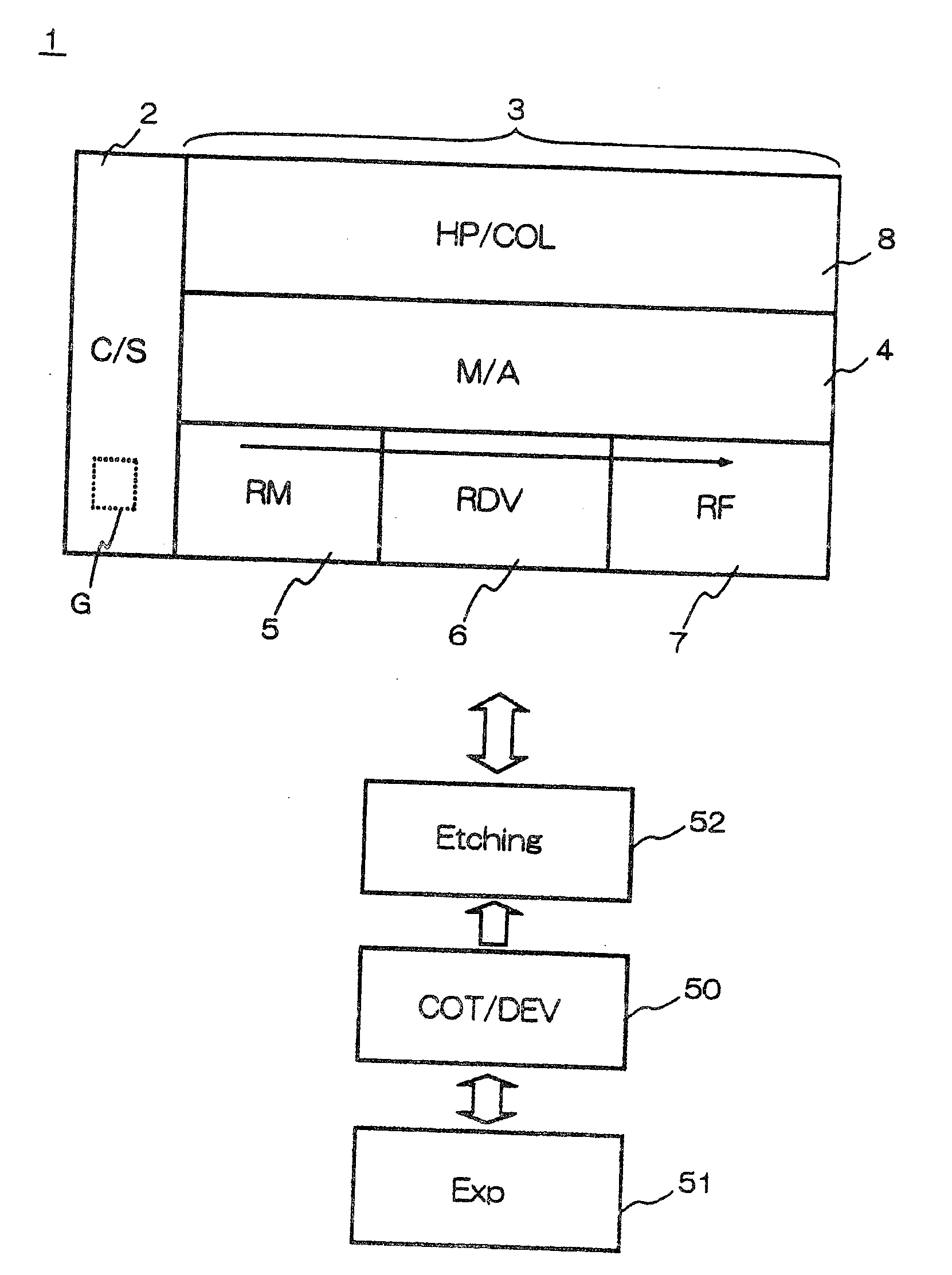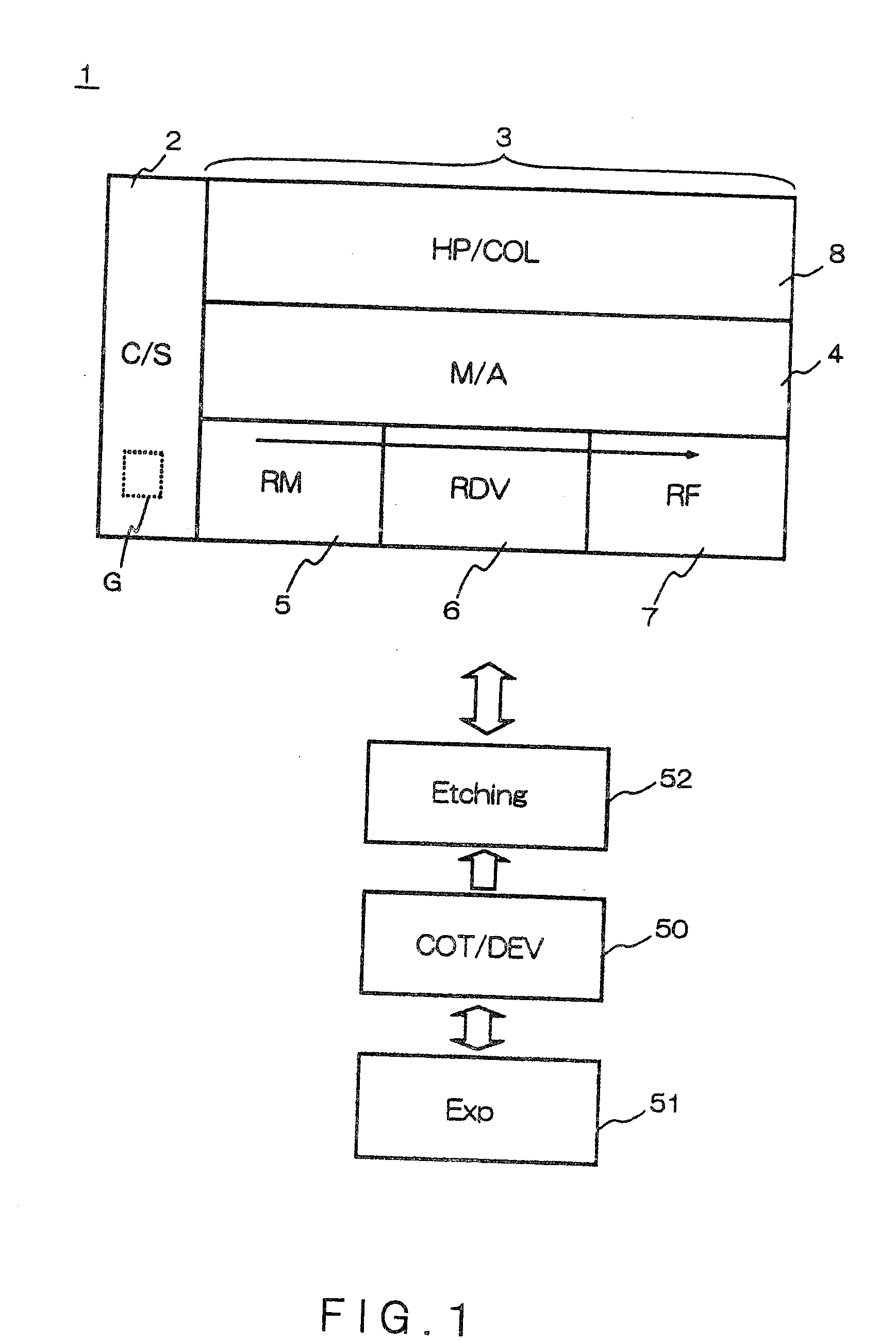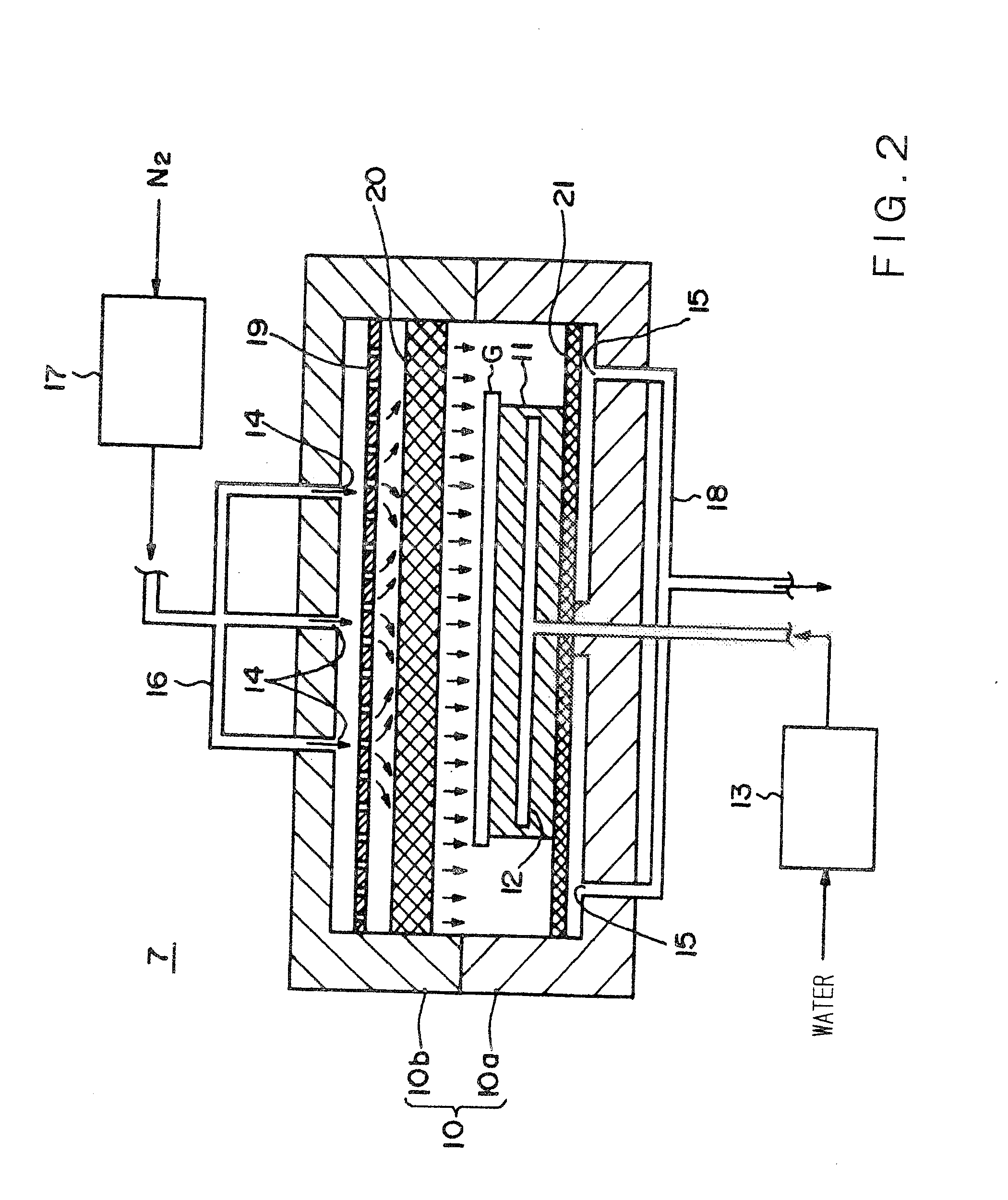Method of processing a substrate
a substrate and processing technology, applied in the field of processing substrates, can solve the problems of degrading efficiency and high machinery cost, and achieve the effect of enhancing the effect of oxidation and degradation due to ozone and forming efficiently
- Summary
- Abstract
- Description
- Claims
- Application Information
AI Technical Summary
Benefits of technology
Problems solved by technology
Method used
Image
Examples
examples
[0086]Next, the method of processing a substrate according to the present invention will be further described based on several examples. In these examples, the substrate processing apparatus discussed in the above embodiment is used, and the effect of the present inventive method is reviewed by actually carrying out an experiment.
experiment 1
[Experiment 1]
[0087]In Experiment 1, influence of each parameter, i.e., the concentration and flow rate of the solvent atmosphere, substrate temperature and / or pressure in the treating chamber, for determining the high-speed dissolving mode (first dissolving-speed mode) and the low-speed dissolving mode (second dissolving-speed mode) in the reflow unit, on the solubility of the photoresist was examined through an experiment
[0088]Specifically, the amount of spread of the photoresist was measured corresponding to changes of the respective parameters, i.e., the concentration and flow rate of the solvent atmosphere, substrate temperature and pressure in the treating chamber.
[0089]The term “amount of spread” is defined by ((the width of the resist after the reflow process)−(the width of the original resist)) / 2 (μm).
[0090]The results of this experiment are shown in FIGS. 6(a) to 6(d). FIG. 6(a) shows a change of the amount of spread of the photoresist corresponding to the concentration of...
experiment 2
[Experiment 2]
[0092]In Experiment 2, the effect of the method of processing a substrate according to the present invention was assessed by performing the reflow process for each of a plurality of processing conditions.
[0093]Specifically, the effect was assessed in the case of dissolving the photoresist consistently in the high-speed dissolving mode A, i.e., under Condition 1, while assessed in the case of dissolving the photoresist consistently in the low-speed dissolving mode B, i.e., under Condition 2.
[0094]Under Condition 3, the photoresist was dissolved in the high-speed dissolving mode A until it reached the stepped portion (the amount of spread was 1 μm), and was then dissolved in the low-speed dissolving mode B after it had passed through the stepped portion and then masked the target (the amount of spread was 2.5 μm).
[0095]Under Condition 4, the photoresist was dissolved in the low-speed dissolving mode B until it reached the stepped portion (the amount of spread was 1 μm), ...
PUM
| Property | Measurement | Unit |
|---|---|---|
| flow rate | aaaaa | aaaaa |
| atmospheric pressure | aaaaa | aaaaa |
| temperature | aaaaa | aaaaa |
Abstract
Description
Claims
Application Information
 Login to View More
Login to View More - R&D
- Intellectual Property
- Life Sciences
- Materials
- Tech Scout
- Unparalleled Data Quality
- Higher Quality Content
- 60% Fewer Hallucinations
Browse by: Latest US Patents, China's latest patents, Technical Efficacy Thesaurus, Application Domain, Technology Topic, Popular Technical Reports.
© 2025 PatSnap. All rights reserved.Legal|Privacy policy|Modern Slavery Act Transparency Statement|Sitemap|About US| Contact US: help@patsnap.com



